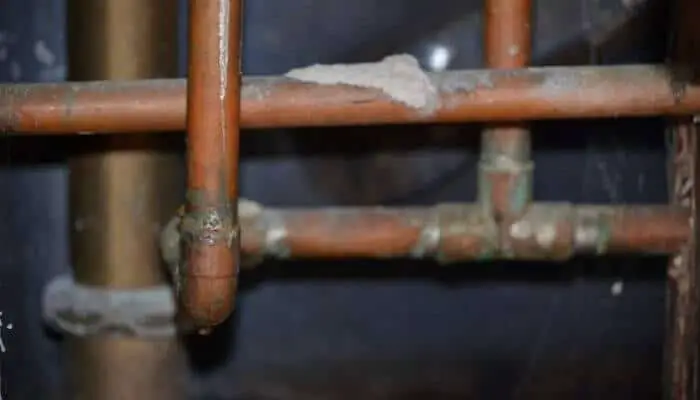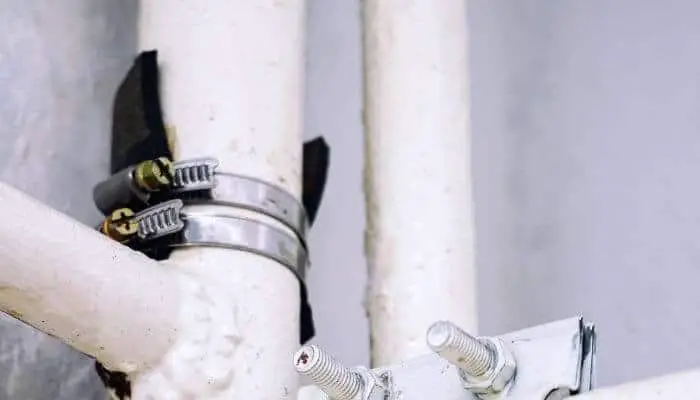Sometimes a slow water leak can seal itself but don’t rely on this happening.
A slow water leak may seal itself if:
- The pipe swells under pressure.
- Metal oxidization causes micro expansion which may seal a leak.
- Limescale in the water can create calcium deposits over time which can fill the crack.

How To Stop A Slow Water Leak:
To permanently repair a slow water leak:
1. Locate the leak
First, find the leak.
This is easy enough to do if you can see it leaking from a joint or hole in an exposed pipe.
If all you can see is a damp patch on a wall or ceiling then you will need to remove the plasterboard to expose the pipe and investigate further.
2. Close the water valves
Next, you need to turn off the water in your home to stop the leak.
To do this locate your property’s main stopcock and turn it off, this will stop the water throughout your home.
It can typically be located under the stairs, under the sink or near your water storage tank.
3. Fix the leak
Most leaks occur from pipe joints, some may occur from a split or puncture in a pipe:
Fixing a joint leak
Poorly sealed pipe joints often cause leaks.
To fix pipe joint leaks follow these steps:
- Disconnect the pipe joint.
- Clean both threads with a wire brush to get rid of any residue.
- Cover the male fitting with a few layers of joint compound.
- Thread the male and female parts back together again until tight.
Fixing a hole in a pipe
There are a few methods you can use to repair a hole in a pipe, these include:
1. Using epoxy putty
Take the epoxy putty and knead it to soften it.
Once soft push it into the hole, leave it to cure and harden.
It should take about 10 minutes to begin to harden and around 4 hours for the epoxy to cure completely.
You can then turn the water back on.
2. Use pipe repair tape
Waterproof tape such as Gorilla tape is best suited for this job, avoid duct tape as this is not an effective long-term solution.
Stretch the tape and press it firmly over the hole.
Depending on the severity of the leak add additional layers of tape.
3. Use a pipe repair clamp
A pipe repair clamp consists of a rubber sleeve that is clamped securely on a pipe with two small metal clamps.

Place the pad over the part of the pipe that has the leak in it.
Fit the two clamps over either end of the pad.
Screws the clamps tightly onto the plant.
4. Replacing the pipes
If your pipe has numerous pinhole leaks then it is probably a good idea to replace the section of pipe as then this can be a sign that you have some serious corrosion in your pipework.
The older your pipes are the more necessary replacement is likely to be.
Copper pipes can last as long as 50 years, however in some cases they may only last 20 years.

